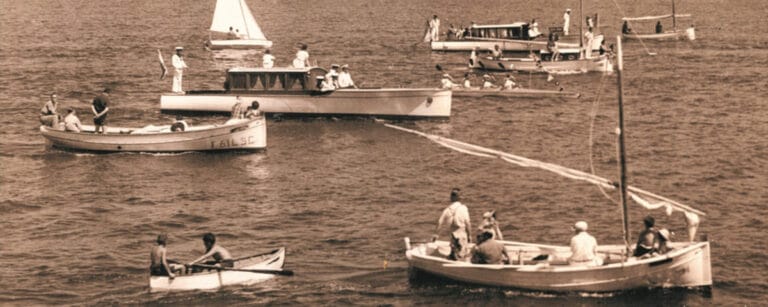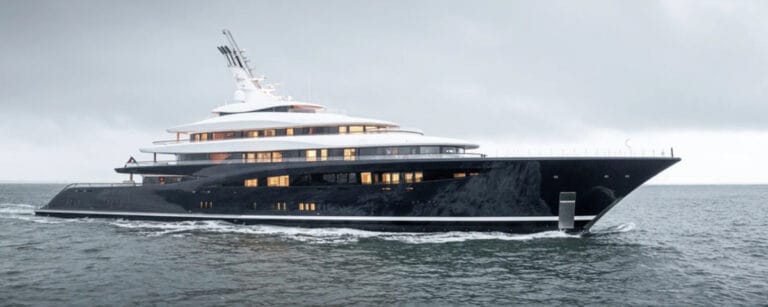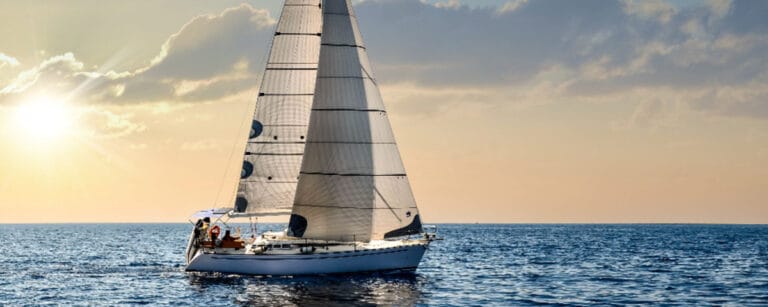French Riviera: A walk from headland to headland, on the customs officers’ path
Exploring the French Riviera: Coastal Paths for Sailors
For coastal navigators cruising the Riviera from east to west, there are countless ways to experience the Côte d’Azur. One unique approach is to disembark and explore the ancient customs officers’ paths on foot. These trails, hugging the most iconic capes between Menton and Antibes, offer a rare perspective: a coastline viewed both from the sea and from the land, at human level. It’s a singular way to combine boating and hiking, amidst coves accessible by dinghy, sheltered stopovers, and breathtaking viewpoints.
Cap Martin: An Architectural Stopover
Approaching Roquebrune-Cap-Martin by sea, one can already distinguish the white volumes of Villa E-1027, Eileen Gray’s modernist masterpiece, perched just meters above the Mediterranean. Boaters choosing to dock in Menton or the port of Carnolès can follow the Sentier Le Corbusier on foot, which hugs the rocks to the tip of the cape. It’s a walk between two eras: that of the crowned heads who frequented Villa Cyrnos and that of visionary architecture, with Le Corbusier’s minimalist cabin and its colorful camping units, recently restored.
The path winds a few meters above the water, punctuated by stairs, footbridges, and plunging views of boats anchored offshore. In season, paragliders and kitesurfers animate the sky; and on land, the pines hint at sumptuous private properties that only the seas can truly admire in their entirety.
Cap d’Ail: A Thread of Elegance
Just two nautical miles from the port of Fontvieille, Marquet beach marks the beginning of another spectacular section. Here again, the path follows the terrain to skirt coves and hidden villas, towards Mala beach. Those arriving by boat know it well: it is one of the most popular anchorages on the coast, sheltered from Cap Rognoso. From the beach, a short climb gives access to the coastal path.
This shore was once frequented by artists: Sacha Guitry, Greta Garbo, and Winston Churchill all had their haunts here. The path still allows one to approach their former residences from the land, while keeping an eye on the sea. The walk is marked with explanatory panels, but the essence lies elsewhere: in this permanent proximity to the water, in this alternation of suspended passages and coves bathed in light, where one sometimes finds the dinghy of a sailboat beached for a swim.
Cap Ferrat: Boating, Pine Forest, and Heritage
From the cove of Passable or the port of Saint-Jean, boaters can reach the coastal path that circles the entire peninsula. The shoreline here is intact for kilometers. To port, a succession of jagged capes; to starboard, stone walls hiding some of the most beautiful villas on the coast. One can see the silhouette of the Grand Hôtel du Cap Ferrat, its Club Dauphin, and, further on, the lighthouse that still guides navigators on clear nights.
The contrast is striking: on one side, yachts anchored facing Pointe Malalongue; on the other, raw nature, slippery steps carved into the rock, and an almost insular atmosphere. Along the way, a few stairs allow you to reach coves where you can drop anchor during the day, weather permitting. The stopover is complete: swimming, walking, terrace, and history mingle without ever encroaching on each other.
Cap d’Antibes: The Spirit of the Open Sea
At the entrance to the Golfe Juan, starting from La Garoupe, begins the Tirepoil path. The name says it all: here, the wind from the open sea is a faithful companion. From a well-sheltered anchorage or the port of Antibes, a single step ashore is enough to cross one of the most intact landscapes on the coast. Far from the urban bustle, the path borders the closed parks of the most spectacular villas on the cape. One can glimpse the Château de la Croë, owned by the Duke of Windsor and then Roman Abramovich, and end at Villa Eilenroc, now owned by the city.
From the sea, this cape impresses with its high cliffs and dense vegetation. But on foot, one discovers its perfumes, stone staircases, and views of the Baie des Anges. Between two navigations, this parenthesis on land gives another dimension to the stopover, a rare balance between navigation and contemplation.
These capes are natural stopovers for coastal navigators who wish to combine boating and discovery on foot. By sea, one reaches a still preserved coastline; by land, one discovers pieces of history, nature, and architecture invisible from the deck of a boat. This complementarity, from Menton to Antibes, gives the French Riviera a rare richness, to be explored in all seasons.
Before setting off, remember to check the weather forecast.
Enjoyed this post by Thibault Helle? Subscribe for more insights and updates straight from the source.







